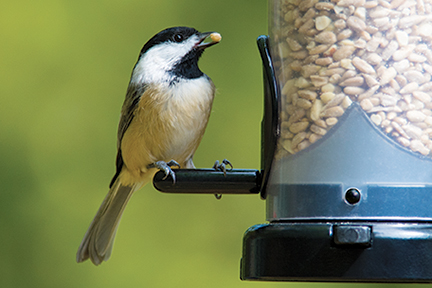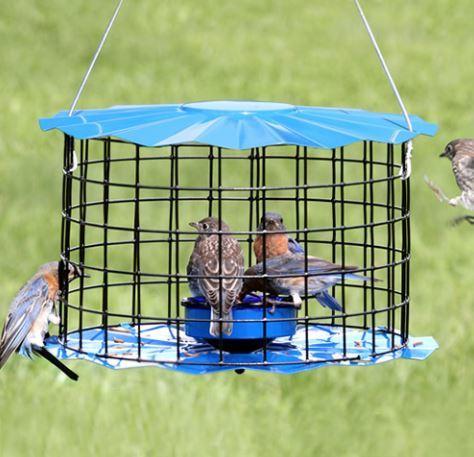Mealworms Are for the Birds
Many birds eat insects naturally, so feeding mealworms to the birds is a natural thing to do. Plus, you’ll enjoy watching birds such as chickadees, bluebirds, wrens, towhees, woodpeckers, robins, catbirds, nuthatches, thrashers and others devour these mouthwatering morsels!
This time of year is perfect for offering mealworms. Parents are taking them by the mouthfuls for their babies and also bringing their fledglings to mealworm feeders,
LIVE OR DRIED?
You decided. There are pros and cons to each. Live mealworms are most appealing to birds, though they can come at a price. Dried are low-cost and convenient but may not be as effective at catching the birds' eyes.
SERVING SIZE OF MEALWORMS FOR YOUR BIRDS
Expect to go through about 100 mealworms a day once the birds know where to find them.
Above: Bluebirds with their fledglings in a mealworm feeder made to keep the big bully birds out.
Important Note: Mealworms do not provide complete nutrition and should only be offered as a supplemental food source, offered on a limited basis. Overfeeding can cause health issues in both adults and their young.


